If you’ve decided to start your own backyard chicken farm, you undoubtedly want to do it well. What exactly does that mean?
The first step is to find dependable egg-laying hens that will thrive in your climate.
Whether you’re a seasoned pro or just getting your first chicks, it is important to take into account the year-round weather in your area to ensure the health and happiness of your new feathered friends.
Some chicken breeds are hardier in colder climates, while others fare better in hotter ones. Utah’s four seasons call for chickens that can handle both hot and cold weather.
Therefore, a breed adapted to living in a mixed climate is ideal for this state.
This article will introduce you to six of the most reliable egg-laying chicken breeds that are able to withstand extremes in temperature.
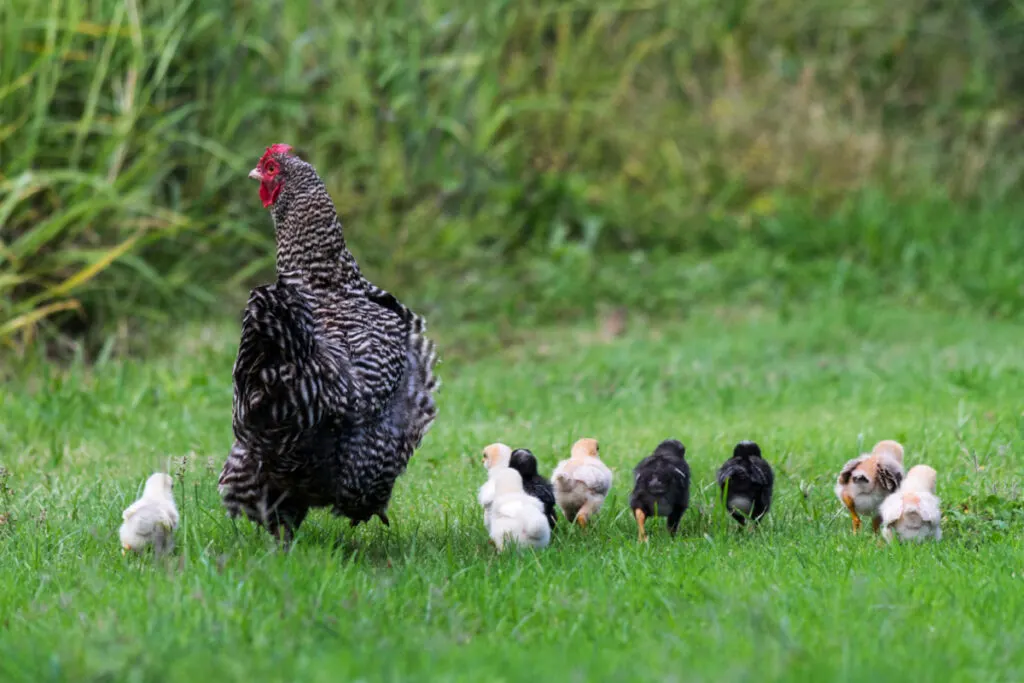
Table of Contents
Climate of Utah
| Summer High | July is the hottest month of the year, with highs of about 90°F. |
| Winter Low | The coldest month in winter is January, with a low of 17°F. |
Utah has a diverse landscape, with mountains covering most of the state.
The climate is naturally cooler in the mountains and higher areas and warmer in the lower parts of the state.
Most of the state rarely experiences long spells of exceptionally cold weather and winter temperatures below zero.
This is primarily because the mountains on Utah’s eastern and northern borders prevent the arrival of bitterly cold air from the continent’s Arctic.
This state experiences all four seasons.
During the summer, Utah has an average high of 79°F, while the winter lows hover around 30°F.
Almost every day of the year in Utah is sunny.
The city of Salt Lake receives between 65% and 75% of its full potential sunshine throughout the spring, summer, and fall, but only 50% during the winter.
List of the Best Chickens for Laying Eggs in Utah
| Leghorn | Lays 280–320 eggs each year. Not recommended for beginners or kids. Great forager. Budget-friendly. |
| Red Star | Lays 280–300 eggs each year. Dual-purpose breed. Robust. Great forager. |
| Plymouth Rock | Lays 200–300 eggs each year. Ideal for novice chicken keepers and younger kids. Hardy and requires little care. |
| Australorp | Lays 250-300 eggs each year. Dual-purpose heritage breed. Easy to handle and docile, perfect for beginners. Hardy. |
| Sussex | Lays 200-250 eggs each year. Dual-purpose breed. Docile and tame. Ideal for beginners. Low maintenance. |
| Rhode Island Red | Lays 150-250 eggs each year. Dual-purpose breed. Hardy and low-maintenance. |
1. Leghorn
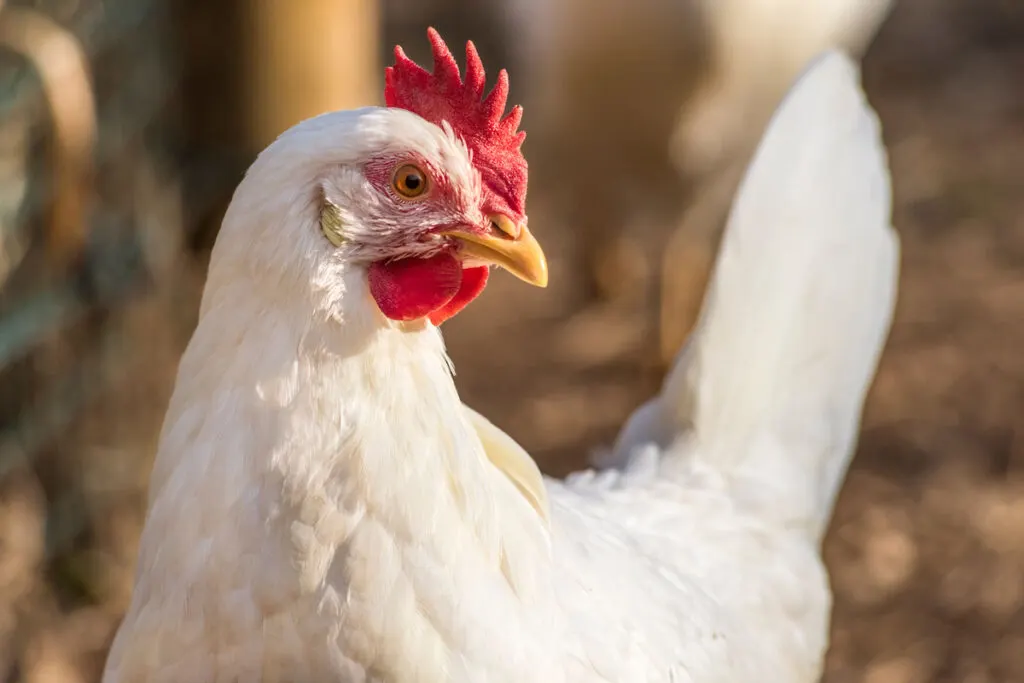
The white feathers and prolific egg-laying abilities of the Leghorn breed have made it a favorite among chicken keepers around the world.
Leghorns are a tough breed that can forage effectively. However, they do not make good pets for families because they aren’t particularly social, and dislike being handled.
Leghorns are a small breed of bird that can reach adult size in a matter of months. They are available in both regular and bantam sizes.
Leghorns are prized for their ability to lay eggs at a low cost. In a nutshell, they don’t have particularly high diet demands, yet they produce lots of high-quality eggs.
Leghorn hens typically begin laying at about four months of age, which is fairly early when compared with other types of poultry.
Each year, they produce between 280 and 320 eggs. That’s about five to six eggs a week from each bird.
2. Red Star
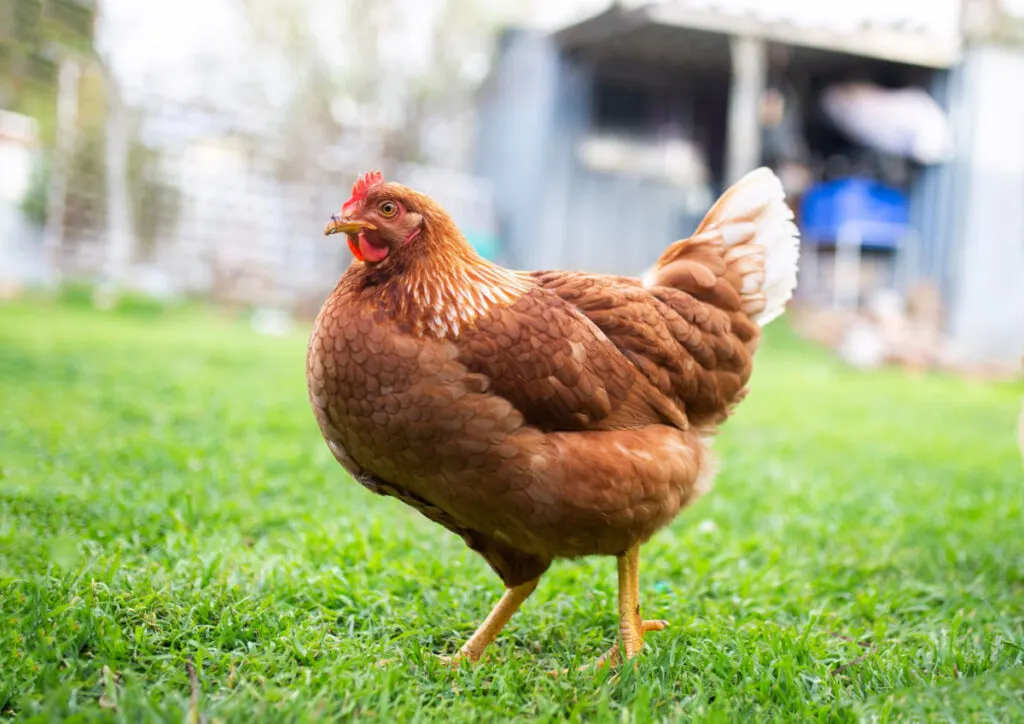
Because Red Stars are hybrids rather than purebreds, there can be significant variation in their looks from one bird to the next.
With an average weight of 6–7 pounds and no more minor “bantam” variants, this hybrid is classified as a medium to large chicken.
The Red Star chicken hens are a remarkable layer, laying anywhere from 280 to 300 large eggs annually.
Red Star hens, on average, begin laying between the ages of 18 and 20 weeks, while the average for most of the other breeds is around 22 weeks.
Due to the fact that they are hybrid poultry, those chickens have a wide variety of distinct personalities.
For this reason, you may hear some bird owners describe their Red Stars as sociable, laid-back, or gentle, while others characterize them as feisty, dominating, or aggressive.
In order to satisfy its prolific foraging needs, the Red Star greatly benefits from being raised in a free or part-time range setting.
3. Plymouth Rock
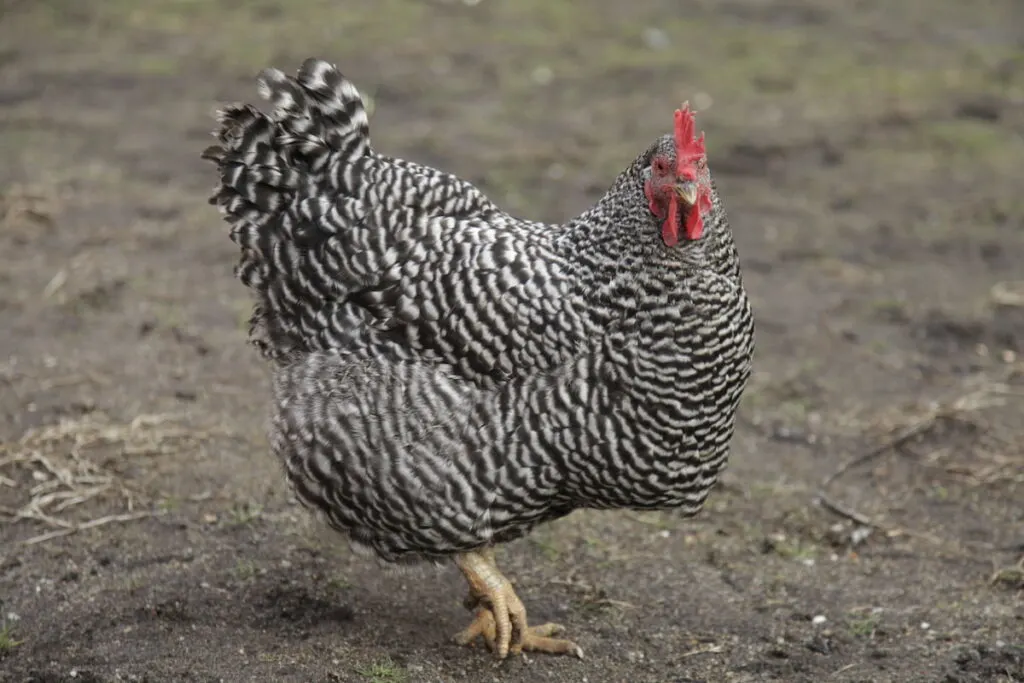
The Plymouth Rock was created in the middle of the nineteenth century in the United States.
They require very little care and are among the easiest chickens to raise.
When the weather turns cold, their full, feathered coat thickens. They maintain their signature fluffy appearance even when temperatures rise, thanks to the seasonal loss of feathers that allows them to better regulate their body temperature.
The Plymouth Rock is a reliable farm chicken. A typical Barred Plymouth Rock hen will lay four to five eggs per week. In sum, they have an annual egg yield of 160–180.
They will get broody and be excellent mothers if you intend to hatch your chicks.
The excellent temperament of these chickens is another selling point for keeping them. The Barred Plymouth Rock Chicken is a friendly, tame bird that enjoys human company.
4. Australorp
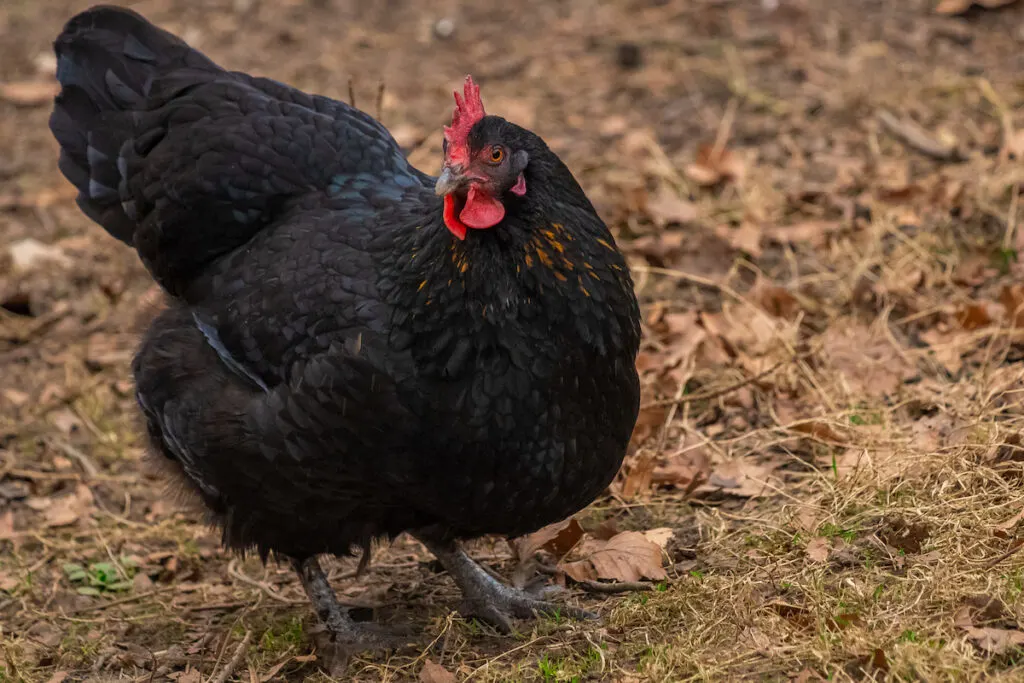
The Australorp is a popular breed in Australian backyards.
This robust bird is friendly to children and appreciates the freedom to roam freely.
They are massive birds with many feathers, and their plumage can be slate blue or glossy black. The average adult rooster weighs about 8.5 pounds, while a hen averages about 6.5 pounds.
The Australorp is a breed of chicken that matures quickly and can start laying eggs between the ages of 20 and 22 weeks.
On average, a hen will lay 250 eggs annually, and female Australorps frequently go broody due to their strong maternal instincts.
Within the flock, the Australorps have great interactions with all of the other species of birds. They’re not aggressive or difficult, but they follow their own path.
5. Sussex
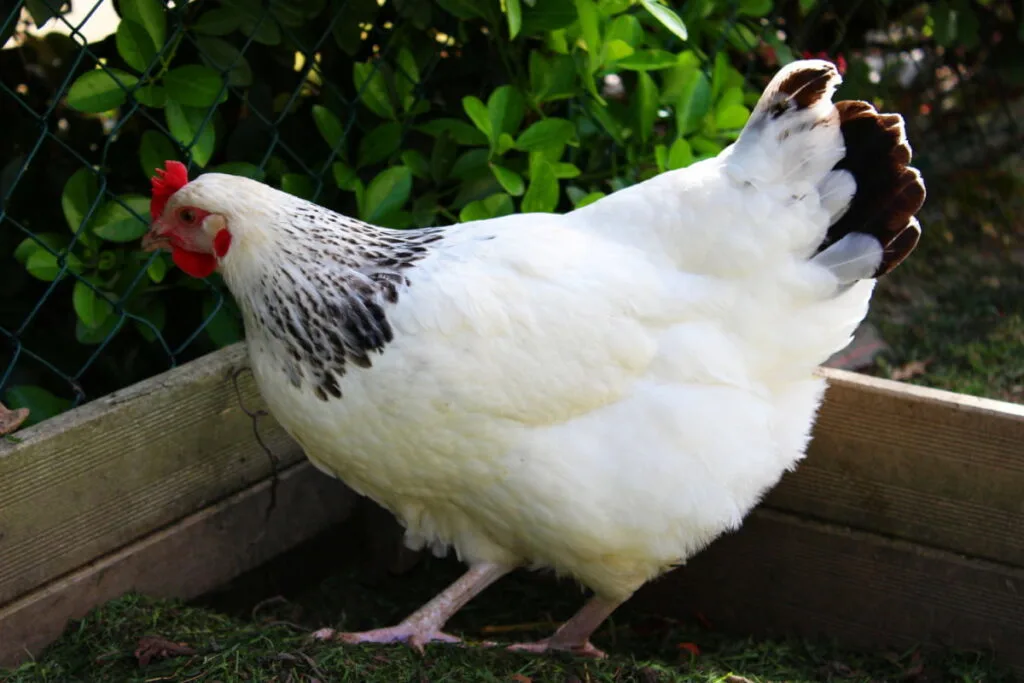
Sussex is highly regarded because it can reliably produce eggs and meat in a backyard setting.
Sussex chickens can be found in a spectrum of colors. The average weight of a Sussex hen is roughly 7 pounds, whereas a Sussex rooster is closer to 9 pounds.
If you want eggs throughout the year, the Sussex chicken is the breed to choose. Unlike most other hens, they will continue to lay eggs all through the winter season. The average annual egg production of a Sussex hen is 200–250 eggs.
Most of their egg production occurs in their first few years of life and ceases entirely by the time they are five or six years old.
The Sussex breed has a reputation for being calm and docile. They’re comfortable being held by anyone from an adult to a youngster, and they’re content either with human company or on their own.
6. Rhode Island Red
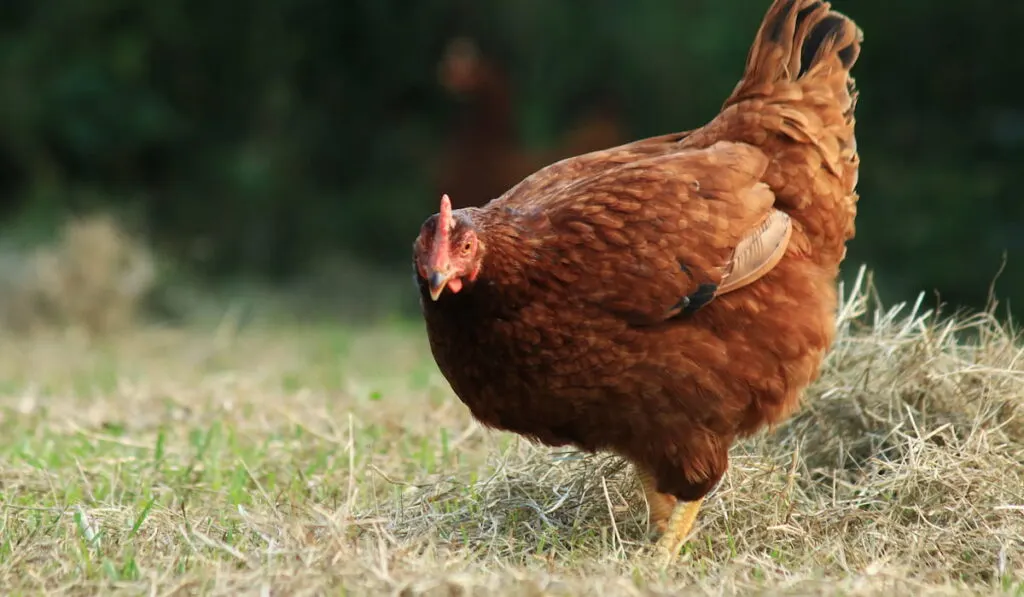
One of the most well-known kinds of chicken, the Rhode Island Red, is mostly kept as a source of eggs in current times.
However, due to their larger size, these birds are also suitable for meat.
Rhode Island Red hens typically begin laying between the ages of 18 and 20 weeks, while some begin as young as 16 weeks.
Rhode Island Reds are consistent layers, and a hen can produce about six eggs weekly. This means that a healthy hen can lay anywhere from 150 to 250 eggs annually on average, with some laying as many as 300 eggs.
The Rhode Island Red is a very resilient breed. They’re hardy enough to survive the harshest winters and the hottest summers on the farm.
The hens are kind and gentle and enjoy being around humans and other chickens.
If you want to keep roosters, you should be prepared for their potential aggression and have previous experience with poultry.
Final Thoughts
If you want to raise hens in your backyard, you have a wide variety to pick from. Think about the weather conditions and size of your yard while deciding on the breed of chicken that will best suit your needs.
Keep in mind that the chickens you plan to buy for your Utah home must be able to endure the state’s hot summer and winter temperatures.
If you can’t make up your mind about which breed of chickens you want for your coop, maybe you should get a mixed flock.
Hens, regardless of breed or size, will form a social order and get along great if they are all purchased at roughly the same time and at the same age.
If you find yourself with a breed that isn’t well-suited to your area, you’ll need a plan to protect them from the cold and heat.
In extremely cold locations, heat lamps can be useful in chicken coops to combat the effects of the cold, while fans can be used to reduce the effects of the sun and heat.
Resources
- https://www.bestplaces.net/climate/state/utah
- https://wrcc.dri.edu/Climate/narrative_ut.php
- https://www.tripreport.com/provinces/utah/climate
- https://www.grit.com/animals/poultry/chickens/breeds-of-chickens-zm0z17mjzreg/
- https://petkeen.com/australorp-chicken/
- https://www.somerzby.com.au/blog/leghorn-chicken/
- https://www.ecopeanut.com/red-star-chickens/
- https://www.chickensandmore.com/barred-rock-chicken/
- https://www.somerzby.com.au/blog/sussex-chickens/
- https://www.thehappychickencoop.com/rhode-island-red/
